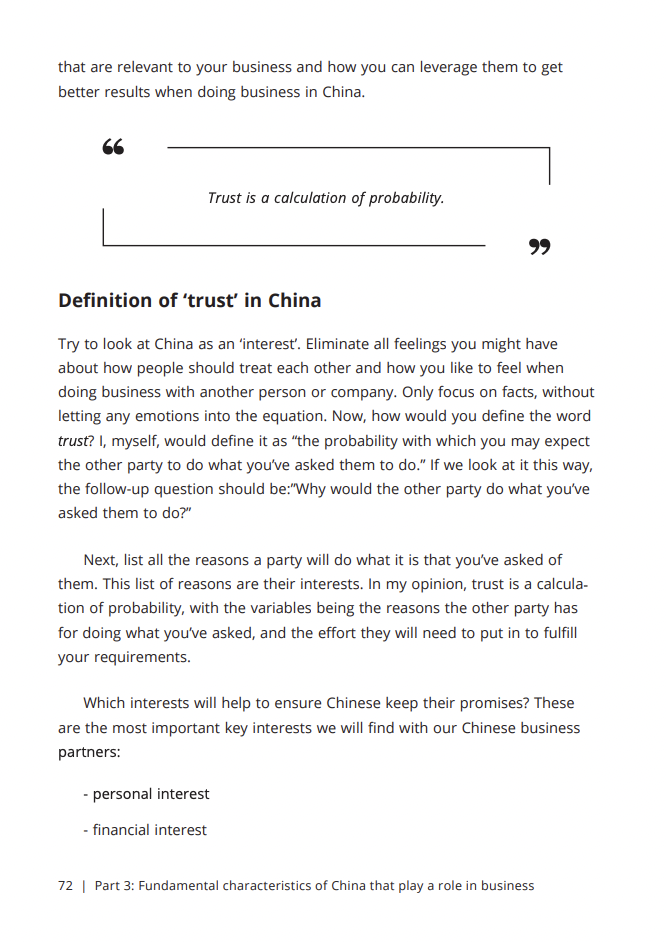Supplier management can be challenging when it involves various components or parts for a product from different suppliers. Improper supplier management can lead to many serious problems. The most common one is indirect quality defects found on the final products, resulting in a time-consuming investigation for the source of problems and solutions.
One of our clients contacted us for a solution after facing repeated severe quality defects from one of their manufacturers. After investigation, we found that the repeated problems were caused by the defective components/parts from the manufacturer’s supplier.
In this USE CASE article, we are going to share how this repeatedly happened and a practical solution to it.
1.The use-case scenario: supplier management
After executing an investigation on the recurring damages to find out the origin of the problem, we found that the damages were not directly made by the manufacturer but by one of their suppliers who provided the components/parts. We also found that the recurring damages occurred in every production/order, somehow in different forms but very similar.
Based on the damages shown and our investigation, we concluded that the manufacturer accepted a lower standard from their supplier and did not proactively inspect their incoming materials (components/parts) – poor raw materials management and IQC management.
When executing the inspections at the manufacturer’s supplier’s side, we constantly found the same damages. After that, we requested the manufacturer to fix these damages.
However, after we came back for the second inspection for these REPAIRED items (components/parts), the same damages were not fully fixed.
- After investigation, reasons found:
The supplier of the client’s manufacturer stockpiled and transported their items without any protection on the factory floor. Every stage they handled these items had no protection covered, resulted in an operational model without any prevention from getting damaged.
No matter how many times they would repair under this condition, it wouldn’t help eliminate the damages. When the old was fixed, new problems occurred due to their improper (general) stock management. With this vision and value, they wouldn’t take concrete actions to improve their production management but tried to convince us to accept the lower quality standard.
After a discussion with the manufacturer, we found no agreement signed between the manufacturer and their supplier. We also learned that the “guanxi” (connections/relationships) made this business possible.
The “guanxi” made it difficult for the manufacturer to make a clear and harsh agreement with this supplier, as this is a long-lasting business relationship.
The manufacturer couldn’t send back the parts for repair because the quality standard was accepted by them in the beginning.
Their passive attitude and poor management resulted in a negative situation in which recurring damaging problems were found, and inspections required back and forth – no sufficient improvement.
Repeated inspections caused a lot of extra work to the manufacturer: unpacked the products, disassembled the parts, repaired the parts by themselves with the best efforts, but still faced the risk of being rejected for another quality inspection by our client.
Furthermore, it affected our client’s plan (delay of goods) and caused huge financial losses (inspection costs/fines/time).
2.Problems encountered: repeated quality defects
- Damages were found on the products.
- Recurring similar damages occurred for every order and repeatedly found during every inspection.
- The manufacturer couldn’t send the damaged parts back to their supplier (as they already accepted the parts of how they were).
- The manufacturer was not able to repair the damages to an acceptable level.
- Inspection costs increased due to repeated inspections needed (as the same damages remained still without any improvements).
3.Origin of the problems: manufacturer’s improper supplier (risk) management
From an objective perspective, the origin of the recurring quality problems can be considered into two parts:
(1)Supplier’s insufficient management: influenced by limited vision and value
First of all, the supplier assembled and produced the items in non-protective environments. The top management didn’t lead their workers and processes in the right direction, resulted in this complex situation.
In other words, their vision and value reflect their approach towards the attitude that they would let their workers handle the products without protection.
(2)Manufacturer’s passive attitude towards supplier management
The manufacturer accepted these products with damages from its supplier. They presented a passive image in supplier management towards the acceptable level for the components/parts the supplier delivered to them.
Also, they failed to have the damages fixed by their supplier.
After the defects found on the final products by our client’s QC inspector, the manufacturer sent the parts back to the supplier to repair.
However, after the manufacturer repaired the products, similar damages were found as the parts were repaired in a non-protective production environment at their supplier’s side.
4.A practical solution to a successful purchasing: by IAAD China Working Method
We can find practical solutions by implementing several practices based on the IAAD China Working Method.
Solutions vary in different situations and issues. You may take this case as a reference to apply the key of the solution to the same or similar cases with a customised strategy, when necessary, to prevent repeated issues.
In this case, the key to avoiding these damages is to change the production environment at the supplier’s side.
The manufacturer could not manage their supplier effectively with an effective solution to manage their supplier better.
When you manage the manufacturer’s supplier, you indirectly manage the supplier’s process and working way.
Because we were dealing with the manufacturer, and the manufacturer could not manage their supplier in the way that would lead to an effective solution we needed to manage their supplier via the client’s manufacturer. Indirectly manage the supplier’s process and working way by managing the supplier management of the manufacturer.
Taking into consideration the difficulty in repairing the items, the top priority is to make sure that the supplier’s first delivery is accepted in accordance with the client’s standard.
Here’s how we can manage our suppliers better:
(1) Interest – IAAD China Working Method
By creating a legitimate financial interest for the manufacturer, you will be able to refuse to ship out the products if any damages found during the inspection.
- Let’s review the case scenario here:
When the (old/same or new/similar) damages occurred again after repair, the manufacturer was again requested to repair the products back and forth.
However, the manufacturer was not able to solve the problems, so they delivered the products with the same (not well repaired) issues again. And they were hoping the client to accept those damages.
The financial interest plays a significant role along with your strategic solution.
- The financial interest here refers to the balance payment, driving them to take care of the products in accordance with the client’s standard instead of rushing to ship them out. There is a risk for the manufacturer that you will refuse to pay the balance payment until the products are produced according to the agreed standards.
- Meanwhile, it requires a warehouse/space to store the unfinished products. The longer it takes to solve the problems, the longer the warehouse will be occupied. Without problems, the space can be used for other orders.
- Also, it will increase their labour costs: unpack the goods, fix the recurring problems, re-arrange inspection, re-pack the products, and involve many other additional works.
- These are the cost points that the manufacturer would take into account to take serious actions proactively.
If you agree in your contract that the manufacturer will be the party who bears the additional inspection costs if any repair work is needed, it will create another financial interest to drive them to cooperate with a solution.
We can also create another legal interest: add the implementation solution in the agreement and sign with the manufacturer before placing the order.
In this way, it’s mandatory for the manufacturer to manage their suppliers better and bear relevant responsibilities if any damages are found on the final products.
Creating the manufacturer a legal interest means creating a legal commitment for them to take specific management actions. The moment they sign the agreement, we hold the legitimate power to indirectly manage their supplier, requesting the execution of the specific management actions as agreed.
(2) Agreement – IAAD China Working Method
The agreement (contract) itself gives us the legitimate strength to manage our manufacturer’s supplier indirectly.
To solve the problem, we had to indirectly “get ourselves involved” in between the manufacturer and supplier. This can be executed by applying certain management actions in the agreement. Here’s what you can do:
We can require the manufacturer to agree on:
- their suppliers shall always protect their products adequately during production and after to avoid the origin of damages and mention how they will protect the products in detail.
- if they do not use this protection in our production, they shall send the parts back to their supplier and refund us if any small damages found.
- the manufacturer shall deliver the protective materials to their suppliers to protect the components/parts so that the suppliers have no excuses just to deliver any defective parts which are not accepted by our client.
- they shall legally agree with their suppliers on the damage acceptance standard-what can be accepted and what NOT.
With the terms and conditions given above, we can legally push the manufacturer forward to manage their suppliers and reach the requirements and standards needed. Regardless of the “guanxi” (the sensitive relationship between the manufacturer and supplier).
Additionally, we will legally make the manufacturer agree with their supplier strategically.
Thus, we will get to indirectly manage the suppliers.
To some extent, the possibility of damages can be reduced, and the problem can be fully solved.
In this use case, we managed to reduce the damages caused by the same origin by 70%.
(3) Assessment – IAAD China Working Method
Last but not least, the QC inspection plays a significant role as well.
Without inspection, the products with damages could be shipped directly to the client. With inspection, we will be able to check whether any damages occurred to avoid a situation in which repair work and recurring problems happened back and forth.
In this case, the same damages were found on the REPAIRED items/products in the inspection.
Normally, trust is possible between buyers and manufacturers. The manufacturers would solve problems when damages found during the first inspection. However, the actions to solve the problems were not seen in this manufacturer.
Relying on their trust with words that they would REPAIR the damages would result in a situation that they would ship out the damaged products to you.
By all means, it’s necessary to implement quality inspection before shipping and also another inspection to check whether the products are repaired or not. Also when there seems to be some trust involved in the cooperation.
A quote of the IAAD Working Method Book about “Trust”.

The definition of “Trust” in China: “the probability with which you may expect the other party to do what you’ve asked them to do.”
Inspection is the key to managing the situation and enforcing your solutions to solve the problems effectively.
Conclusion:
A few key takeaways for the solutions:
- Always deal with your manufacturers/suppliers by a contract/agreement.
- Make the agreement in detail as possible as you can to mention all risks and legitimate responsibilities.
- Create a legitimate financial interest for the manufacturer in the agreement.
- Make your manufacturer agree with the obligations to take concrete actions to manage their suppliers better.
- Understand the Chinese culture and business environment, for instance, the “guanxi”.
- Implement QC inspection during the production and before shipping out from the manufacturer’s side.
To learn more about China’s supply chain environment, contact us or read the book IAAD China Working Method.


